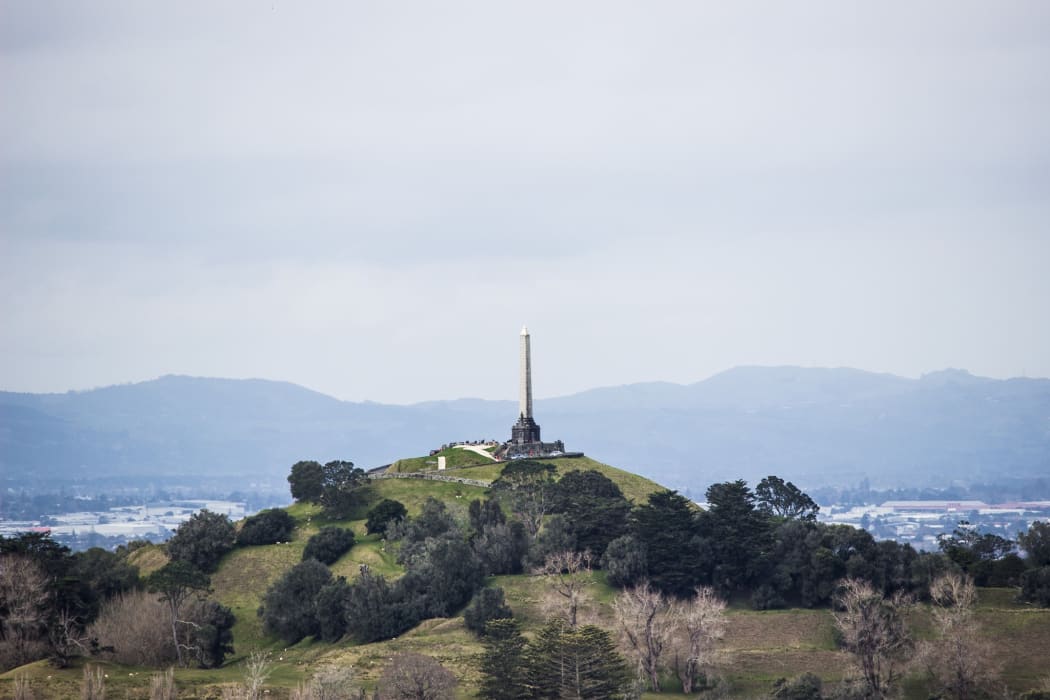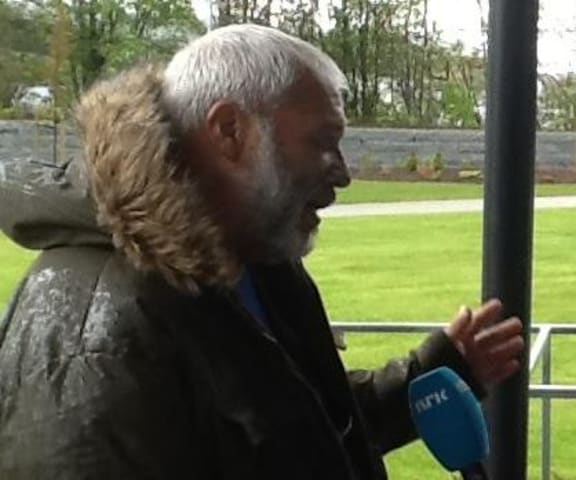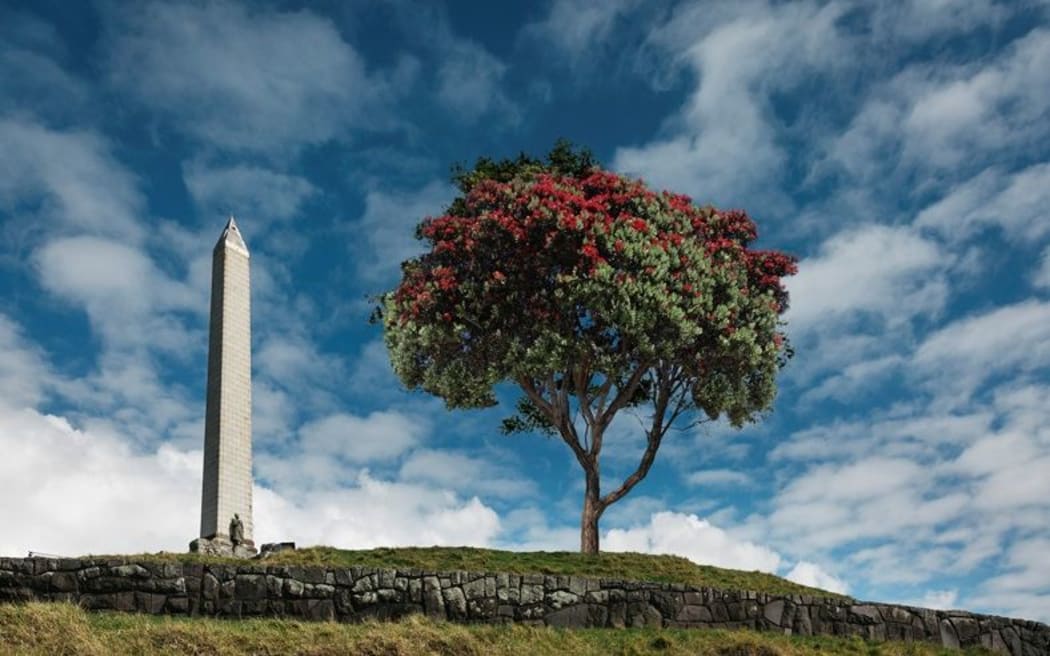A Maori activist who took a chainsaw to the pine on Maungakiekie or One Tree Hill in Auckland, says he is sympathetic towards those who were upset by its removal.

One Tree Hill, Auckland Photo: RNZ/Cole Eastham-Farrelly
A grove of native trees is to be planted on the hill 15 years after the lone Monterey Pine had to be removed following chainsaw attacks.

Announcing the new plan for One Tree Hill were (from left) council asset development manager Mace Ward, Councillor Christine Fletcher, Mayor Len Brown and Tupuna Maunga o Tamaki Makaurau Authority chairman Paul Majurey Photo: RNZ / Cole Eastham-Farrelly
The man who attempted to cut it down, Mike Smith, said the date he did it was significant because it was the anniversary of the signing of the Declaration of Independence.
Mr Smith said a group of activists were looking for a symbolic act that would provide a platform to address the government's fiscal envelope policy - a target to settle all historic Treaty claims for $1 billion.
Mr Smith said after speaking with Tainui kuia, Eva Rickard he decided One Tree Hill and its lone pine would make a good symbol.
Eva Rickard told Mr Smith before the pine tree a large totara stood proudly on top of Maungakiekie, it was known as Te Totara-i-ahua and was planted many years before to commemorate the birth of a chief's son.
The day began early when Mr Smith attempted to take down the reinforced steel bars which protected the pine. He said he knew he had to work quickly as he believed nearby houses would report him to police.

Mike Smith Photo: Supplied
Police turned up halfway through his attempt to fell the tree.
He remembers dozens of police with guns and dogs. Asked whether the dogs got him, he replied "they had a good chew" and he still has the scars today.
Mr Smith said he took the scarf out of one side, then got half-way through the holding wood which would have taken it down before the dogs got him.
He said looking back it probably was not the best attempt to launch the campaign against the fiscal envelope as the message was muddled.
While some did get an opportunity to explain their resistance to the government's Treaty policy much of the coverage was about the tree.
Mr Smith said the Pakeha backlash was not as bad as he had anticipated.
He said for a few years, "I was walking around with my eyes like radars kind of whenever I got into a public situation I'd expect to see some upset Viking charging towards me but funnily enough that didn't really happen."
Mr Smith said he now understood and could sympathise with people who had affection for the tree.
He had heard stories from some about what the tree meant to them including the place where some courted or others who had spread loved one's ashes. He said he had got no comfort from that at all.

Within 20 years, a lone tree will stand again on Māungakiekie. Photo: Supplied
The plan to replant the Maungakiekie tihi has come as a results of a decision made by the Tūpuna Maunga o Tāmaki Makaurau Authority, the co-governance entity established to administer Maungakiekie and 13 other Tūpuna Maunga.
While a collection of native trees will be planted, over the course of several years, and overseen by aborists, a process of selection will see the stronger trees emerge and eventually a single pohutukawa or tōtara should stand at the top of the hill.




